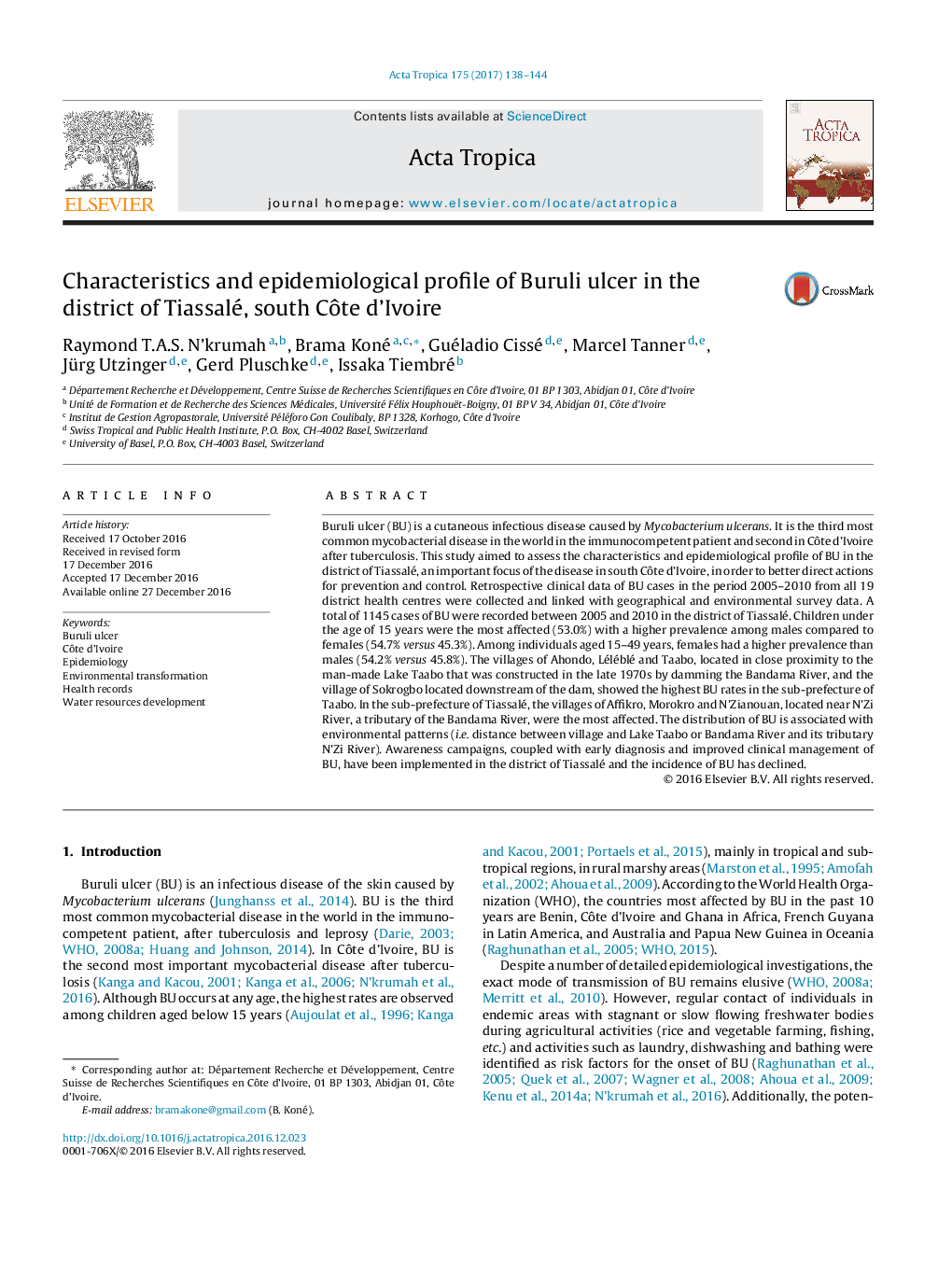| Article ID | Journal | Published Year | Pages | File Type |
|---|---|---|---|---|
| 5670749 | Acta Tropica | 2017 | 7 Pages |
â¢We studied the epidemiological profile of Buruli ulcer in south Côte d'Ivoire.â¢Most Buruli ulcer patients live in rural areas, lacking access to clean water.â¢Children <15 years, particularly boys, were at highest risk of Buruli ulcer.â¢Ulcers were the predominant clinical form in Buruli ulcer patients.â¢Buruli ulcer “hotspots” were located in close proximity to a man-made lake.
Buruli ulcer (BU) is a cutaneous infectious disease caused by Mycobacterium ulcerans. It is the third most common mycobacterial disease in the world in the immunocompetent patient and second in Côte d'Ivoire after tuberculosis. This study aimed to assess the characteristics and epidemiological profile of BU in the district of Tiassalé, an important focus of the disease in south Côte d'Ivoire, in order to better direct actions for prevention and control. Retrospective clinical data of BU cases in the period 2005-2010 from all 19 district health centres were collected and linked with geographical and environmental survey data. A total of 1145 cases of BU were recorded between 2005 and 2010 in the district of Tiassalé. Children under the age of 15 years were the most affected (53.0%) with a higher prevalence among males compared to females (54.7% versus 45.3%). Among individuals aged 15-49 years, females had a higher prevalence than males (54.2% versus 45.8%). The villages of Ahondo, Léléblé and Taabo, located in close proximity to the man-made Lake Taabo that was constructed in the late 1970s by damming the Bandama River, and the village of Sokrogbo located downstream of the dam, showed the highest BU rates in the sub-prefecture of Taabo. In the sub-prefecture of Tiassalé, the villages of Affikro, Morokro and N'Zianouan, located near N'Zi River, a tributary of the Bandama River, were the most affected. The distribution of BU is associated with environmental patterns (i.e. distance between village and Lake Taabo or Bandama River and its tributary N'Zi River). Awareness campaigns, coupled with early diagnosis and improved clinical management of BU, have been implemented in the district of Tiassalé and the incidence of BU has declined.
Graphical abstractIn the district of Tiassalé, south Côte d'Ivoire, children under the age of 15 years were found to be the most affected by Buruli ulcer with a higher prevalence among boys compared to girls. Ulcers were the most frequently encountered clinical form in patients. The villages of Ahondo, Léléblé and Taabo, located in close proximity to the man-made Lake of Taabo and, Sokrogbo, located downstream of the dam, were most severely affected by Buruli ulcer in the district of Tiassalé.Download high-res image (228KB)Download full-size image
